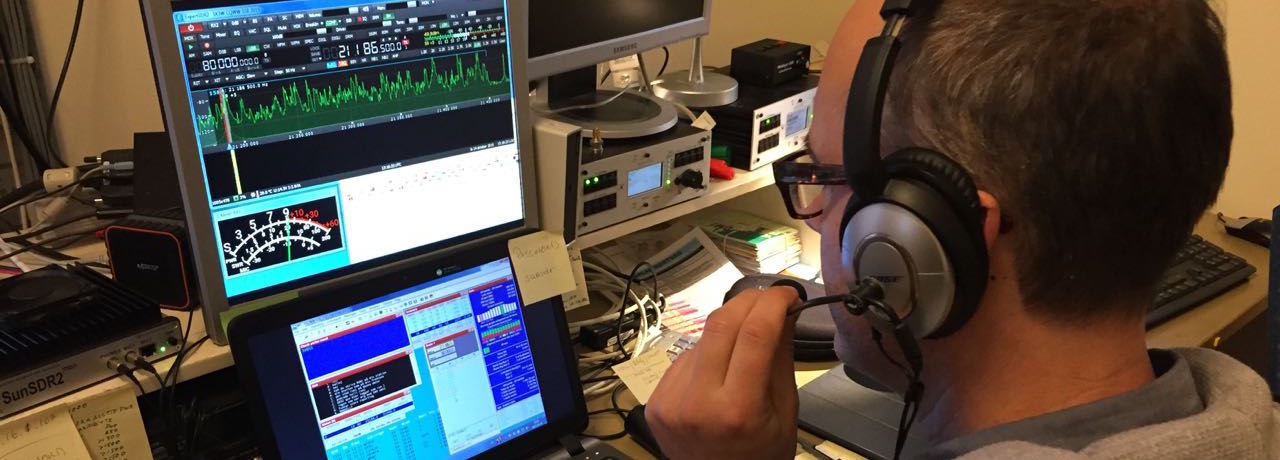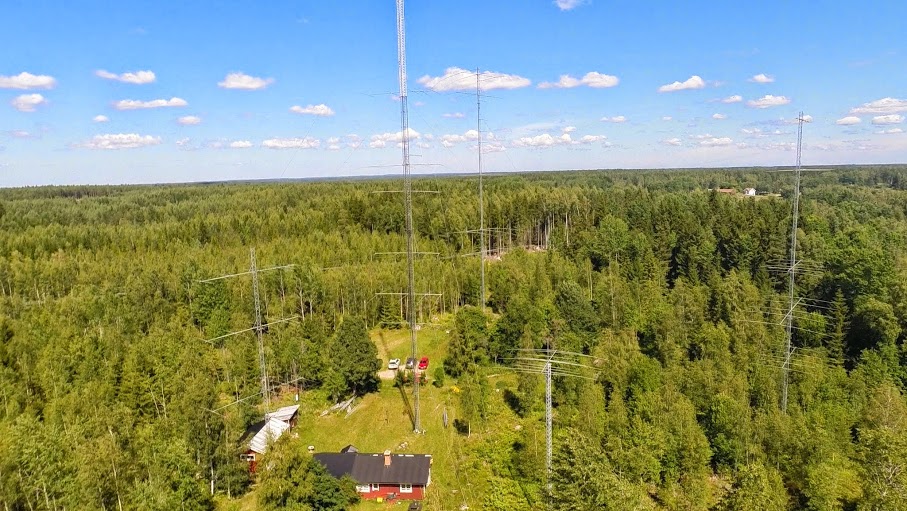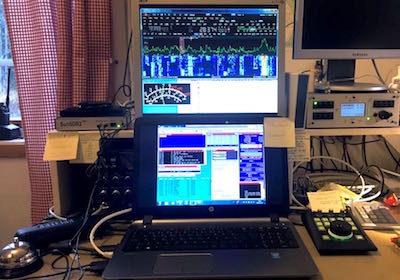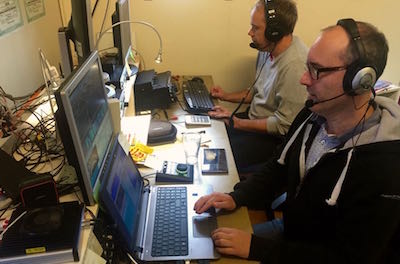SunSDR2 PRO at SK3W in CQWW SSB

How does the SunSDR2 PRO perform in a multi operator contest environment? We wanted to test the PRO in the toughest possible environment, a multi operator contest effort at a contest super station. SM3SGP, the owner of SK3W invited us to take part in a Multi-Two effort in CQWW SSB where we got the chance to run the PRO in a tougher environment than most DX’ers will ever experience.
SK3W is equipped to win categories and break records. There are five towers filled with stacks of mono band beams and four element phased arrays are used on 80 and 160 meter. With multiple signals and high gain antennas we were really looking forward to play with the PRO in the QRM.

The SunSDR2 PRO was hooked up in the multiplier position figuring S&P is where we have most use of the band scope and great filtering. We also connected a noise cancelling headset with a ModMic to the radio. The software, ExpertSDR2, was running on a HP laptop with Intel Core i5 @ 1.7 GHz and an external monitor was dedicated to display the WinTest logger software. The screens where placed in a vertical arrangement with the logger on the lower laptop screen, see photo. This turned out to be very comfortable.
WinTest was used to log this contest and the PRO controls Wintest using is TS-430 CAT emulation via a virtual serial cable. This worked very well, and as there is no external hardware is involved, the CAT connection is very fast and reliable.

Of course this is not a scientific test in any way, we where just looking to get the feeling of the SunSDR2 PRO in a multi operator environment. And this little SDR transceiver worked great during the 48 hours of the contest. At the multiplier position the band scope and waterfall are really useful to quickly get an overview. The visual presentation of signals adds a lot of information in addition to the cluster spots, and this is really helping search and pounce.
With two strong signals on neighbouring bands we wanted to explore how the SunSDR2 PRO’s receiver performed. There are already many user reports of its excellent ability to pull weak signals out of the noise, but what if the ADC was exposed to strong signals from nearby transmitters? In the 48 hours of the contest we didn’t notice any overloading of the receiver’s ADC and operators commented on the good filters.

Even operators with no previous experience of ExpertSDR2 where able to easily operate the transceiver thanks to its intuitive user interface. And the SunSDR2 PRO was easy to tune thanks to the E-Coder control panel.
So, how did we do in the contest? Together with SM5EPO, SM5AJV and SA5BCG we had lots of fun! The start of the contest was a little slow, but once through the first night daylight ignited the higher bands and we enjoyed eleven hours straight with rates above 200 and up to over 300 some hours. Sunday started with a nice run on 40 but was slightly slower Saturday overall which is normal as by then only the casual participants remains to be found.
The best bands where clearly 15 and 20 meters with 2000+ contacts each, but 40, 80 and 10 meter also provided action and on 160 we scoped up around 200 contacts.
After 48 hours of fun and QRM our claimed score is 13.120.886 points. Not enough to beat our own SM record, but a nice result considering the small team and current propagation.
Band QSOs Zones Countries 160: 207 11 54 80: 814 16 88 40: 1058 33 119 20: 2461 37 45 15: 2257 34 133 10: 862 33 138 Total: 7659 164 678 Total Score 13,120,886
73 de SM0MLZ & SM0MDG

